The real Hoosiers tale: Crispus Attucks

Sometimes winning isn’t the only thing, even the winning of championships.
Sometimes a team’s accomplishments carry so much substance and significance that its legacy extends far beyond titles and continues to resonate for years to come.
So it is with Crispus Attucks High, the all-black Indianapolis school whose basketball teams of the 1950s will be honored by the Indiana Pacers on Wednesday before their game with the New York Knicks at Bankers Life Fieldhouse.
“Attucks stands out, arguably, as the best team ever in Indiana, especially with what they had to go through,” said Chris May, director of the Indiana Basketball Hall of Fame, which includes the ’55 and ’56 Attucks teams as inductees. “Their success changed things in [Indianapolis] and went well beyond the realm of high school sports.”
Attucks’s record continues to dazzle six decades later. Led by Hall of Famer Oscar Robertson, the Indianapolis high school won Indiana state basketball championships in 1955 and ’56, and added a third in ’59. The ’55 Tigers were the first all-black high school team in the nation to win a state championship and the first champ from Indianapolis. The ’56 team was the first Indiana high school to complete an undefeated season, 31–0, culminating with a 79–57 state title game victory over Lafayette Jefferson. Robertson ended his high school career that night by scoring 39 points before 15,000 fans at Butler Fieldhouse. The ’56 Tigers’ average margin of victory was 28 points in the regular season and 23 points during the tournament.
Yet these gaudy numbers describe only part of the Attucks story. This was the 1950s, and Crispus Attucks was a black school in a state that had been a hotbed of Ku Klux Klan activity less than a generation earlier. Not everyone in Indiana welcomed Attucks to the ranks of the elite.
“There wasn’t equality in the 1950s like there is now, “said Bill Hampton, a guard on the 1955 championship Attucks team. “You learned to deal with it—to take everything with a grain of salt. If we used color for everything that was said against us we couldn’t have played basketball.”
Bobby Plump, whose last-second shot gave tiny Milan High School the 1954 state championship—and served as the inspiration for the 1986 movie Hoosiers—remembered the ’54 tourney in Indianapolis before Milan was scheduled to play Attucks in what would be considered an Elite Eight game today.
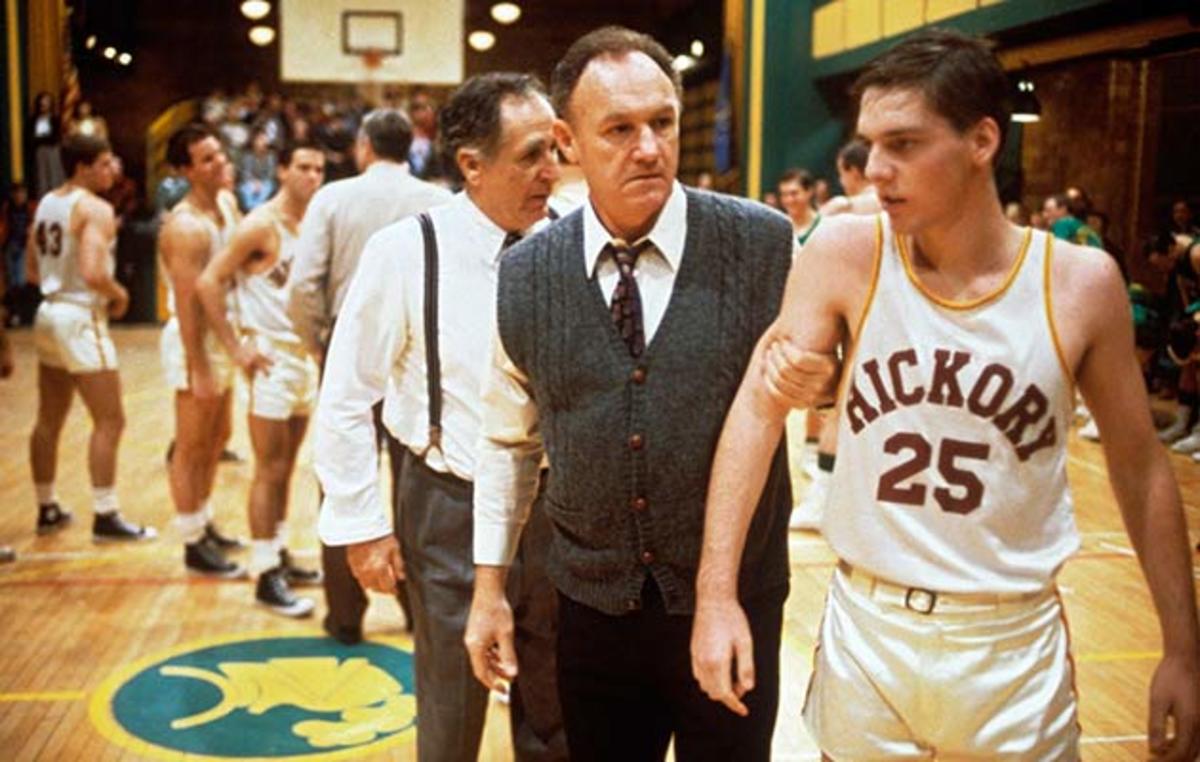
“As we walked from our hotel to get something to eat at a restaurant, cars would stop and yell at us, ‘Beat those n-----s. Get those n-----s out of here,’ Plump recalled. “It’s hard to talk to people today about how much prejudice there was then.”
Cowboy Way: Dirk still loving the ride
Legend has it that former KKK Grand Dragon D.C. Stephenson originated the idea for Attucks High School, named for the black patriot killed in the Boston Massacre. But in actuality, the city’s school administrators made the call on Attucks, not the KKK. Once Attucks opened in 1927, however, it meant no blacks would attend the same public high schools as Indianapolis’s white students.
Until the 1940s, black schools couldn't even compete in the Indiana state tournament, and the Hoosier state didn’t officially desegregate schools until 1949. Attucks’s tiny gym was inadequate for organized basketball, meaning the Tigers always played on the road, often in towns where blacks were not welcome at restaurants or even at gas stations.
*****
Long before Attucks turned into a basketball powerhouse, the school had earned a reputation for superb academics and outstanding teachers, most with advanced degrees. Today many of those teachers would be university professors, but in the years before and after World War II, college openings for black faculty members were rare.
“Attucks was a stunningly good school,” said filmmaker Ted Green who is working on a documentary about Attucks scheduled for release in August. “A school built to fail succeeded beyond anyone’s imagination. It was an absolutely solid school from the start, truly a staff rife with excellent teachers.”
There were teachers like John Morton-Finney, the son of a slave and a Buffalo Soldier in World War I who had three degrees and spoke five languages. Green said Morton-Finney later practiced law until the age of 105. The first principal was Matthias Nolcox, who rose from a poor black settlement in southern Indiana to earn a master’s degree from Harvard the year he started at Attucks in 1927.
“These [black] students had been poisoned by low expectations, sitting in the back of the classroom [at white schools],” Green said. “They went from students of whom little was expected in the white high school and now standing in front of them was John Morton-Finney, demanding more than they had ever given before.”
The championship basketball players knew it was academics first at Attucks.
“If you were a poor student, you ended up being better at Attucks,” said John Gipson, who played for the ’55 and ’56 title teams. “I’d have to sit down for a half-hour to explain how good the teachers were. They would take extra time to explain things to you. And you needed at least a C-plus average to play basketball.”
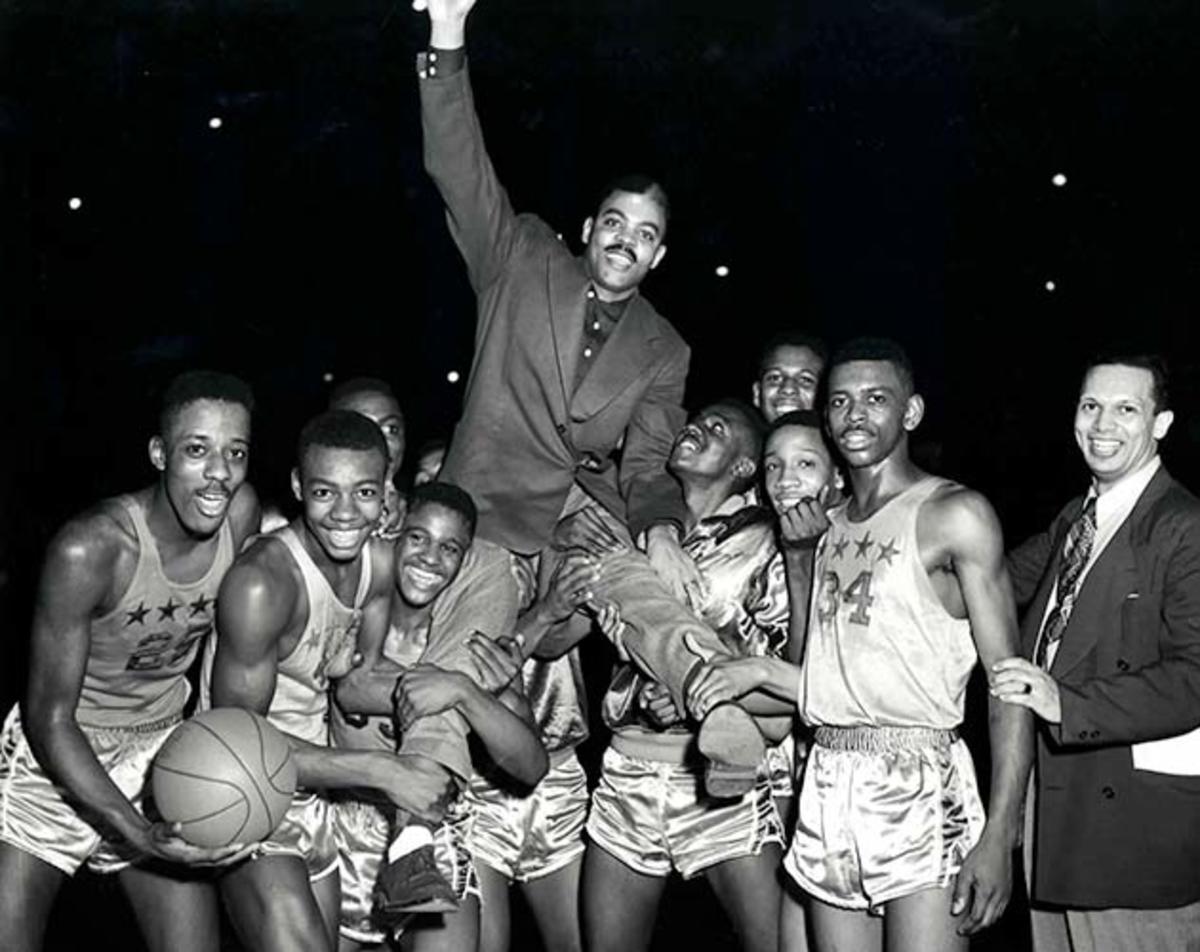
Willie Merriweather, a member of the ’55 championship team who later led Purdue in scoring two times and earned All-Big Ten honors, said four years of zoology at Attucks provided perfect preparation for college.
“They were all good teachers at Attucks, caring teachers,” Merriweather said. “When I went to Purdue, I got A’s in biology. Senior year I was on the dean’s list with a B-plus average.”
Attucks basketball began catching up with the school’s sterling academics when Ray Crowe took over the program before the 1950–51 season. The Tigers reached the ’51 state semifinals and would feature future Harlem Globetrotters Hallie Bryant and Willie Gardner as well as Bailey Robertson, Oscar’s older brother. A horrendously bad foul call on Bryant likely cost Attucks a semistate title in ’53, leaving the impression on Crowe and his players that they often were playing “five against seven” on the court.
SI's 50 greatest players in NBA history
But Crowe never wanted his players to use officiating as an excuse. There would be no arguments with referees or opposing players. Attucks would win with class.
“Mr. Crowe said you play basketball and I’ll handle everything else,” Hampton said. “To get into it with players or officials was a no-no. We were under a microscope. The white public thought there would be incidents but we just played basketball. It turned out to be the best course of action.”
“We never had a home game, never had a black referee but we never had a technical,” said Stanford Patton, a member of the ’55 and ’56 champs. “Mr. Crowe handled the referees with silence. He sat down, crossed his legs and never got up the whole game. There were a lot of bad calls but he never got up.”
When Attucks lost to Milan in the ’54 state tournament, playing without the injured Merriweather and Winfred O’Neal, the Tigers knew they were close to making history.
*****
Entering the ’55 state tournament, Attucks had suffered only one defeat, a one-point loss at Connersville. The loss not only showed the Tigers they could be beaten if they didn’t play their best, but also demonstrated the good and bad of Indiana basketball.
To help provide comfort in a packed and overheated gym, school officials opened the doors, letting in the frigid night air. This allowed condensation to build up on the gym floor, which was situated over a swimming pool, similar to the dance scene in It’s A Wonderful Life. Both teams were slipping and sliding but Attucks led entering the final seconds.
• Subscribe to get the best of Sports Illustrated delivered right to your inbox
Merriweather said he had one foot on the sideline as he guarded the Connersville player with the ball. The player appeared boxed in but he dribbled outside of Merriweather, well out of bounds, and scored a layup. The referees allowed the basket and Connersville had won.
Five against seven again.
Patton, however, recalled a more hopeful development off the court.
“The white people in Connersville, because the gym was so crowded, stood up and gave Attucks’s black fans their seats,” he said. “They didn’t mistreat us on the road.”
There were no other close calls for Attucks that season. And support for the Tigers began to grow.
“A school that was set up to achieve segregation became a source of unity,” Patton said. “Once we had defeated everyone in our sectional, all the white schools in Indianapolis came to Attucks and asked if it would be O.K. to join us [for the rest of the tournament]. That’s when I knew we were respected. We became more than just Attucks. We became Indianapolis Crispus Attucks. All the Indianapolis schools came together.”
Attucks defeated New Albany 79–67 in the state semifinals and then routed Gary Roosevelt, another all-black school, 97–74 in the state title game as Robertson scored 30 points and Merriweather added 21.
A motorcade around the city followed, although Indianapolis police would not let Attucks stop and celebrate at Monument Circle, a tradition for the state champions. Apparently officials still feared black mischief, even from the best-behaved basketball team in the state.
But change was coming.
“It made things a lot different that we won and the city started to embrace us,” Merriweather said. “Cheerleaders from every team came to cheer with our cheerleaders. People recognized us. We ate for free at a lot of restaurants—and also ate free at school. We told each other ‘You know we’ve got to win because we’ve got to eat.’ I think things opened up in the city. The hostility began to die down.”
“Winning puts you in another show,” Patton said. “We had plenty of pride in Attucks. But not only the basketball team won, the black population of Indianapolis won and the white population of Indianapolis won. We all won.”
Even with the graduation of Merriweather, Attucks was more powerful in 1955–56. Oscar Robertson, who declined to be interviewed for this story, was the best high school player in the country and the Tigers often surpassed 100 points. Sometimes the pregame warmup was enough.
“The team manager would come out first, rolling out the rack of basketballs,” LeVerne Benson recalled. “He would take two of them and then dunk them backward. This was the manager. The game was over right then.”
And the officiating no longer presented problems.
“The speed we brought into the game, the jumping and the full-court press was a game no one else was playing in America,” Patton said. “We only had three or four turnovers a game at a fast pace. Come down to the fourth quarter and the other teams were tired and we got the referees tired too.”
It turned out the up-tempo Tigers were far more popular with local fans than Indianapolis’s NBA team, the Olympians of 1949–53, an all-white club that played a pedestrian form of basketball in the years before the league adopted a 24-second clock. Indeed, throughout the 1950s the high school basketball beat was considered one of the most plumb assignments at Indiana newspapers, practically on par with covering college basketball or college football.
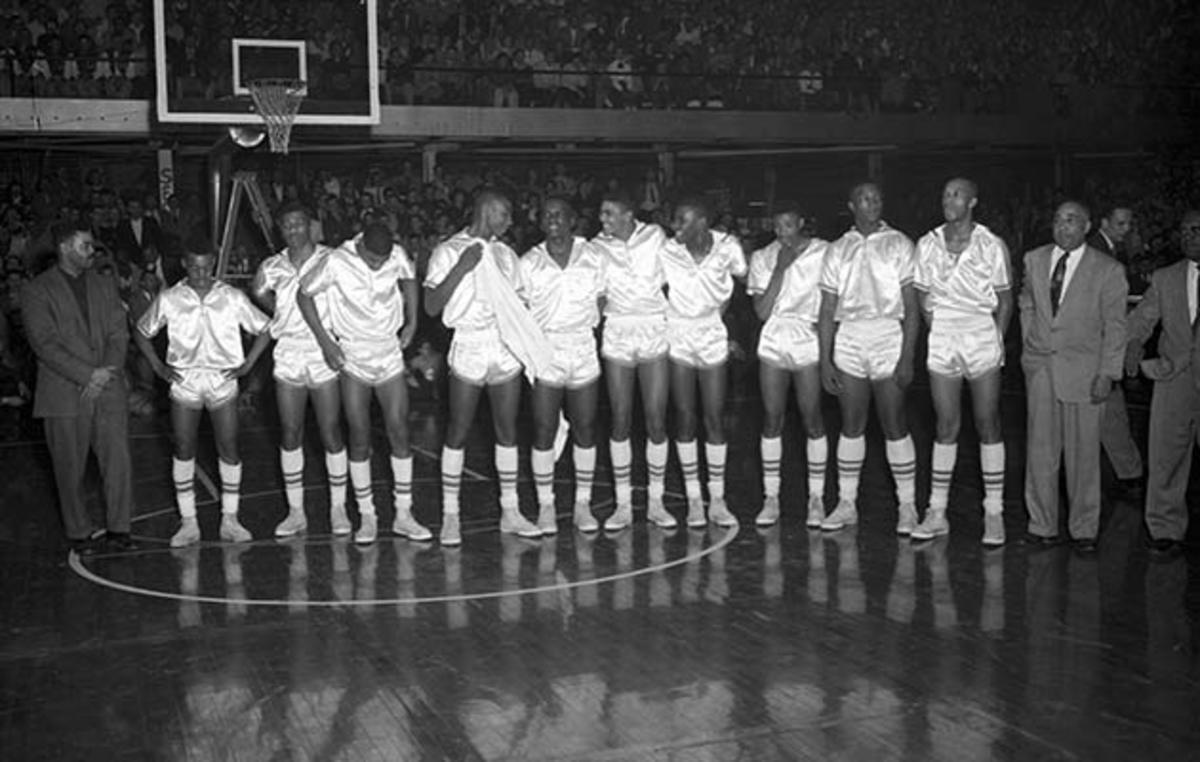
“When Crispus Attucks played it wasn’t just a game, it was an event,” Patton said. “There were more white folks than blacks. We were playing a whole different game of basketball. The ball is moving with blazing speed. Everyone enjoyed it.”
The state tournament was a coronation. Attucks topped Terre Haute Gerstmeyer 68–59 in the semifinals and routed Lafayette Jefferson 79–57 in the title game as Patton scored 19 points behind Robertson’s 39.
“What we did was historic,” John Gipson said. “How we did it, when we did it and, most important, where we did it. We helped put Attucks on the map.”
Ted Green said history should not overlook how well Attucks players comported themselves during their double championship run.
“Attucks not only played brilliant basketball, but it was known for impeccable sportsmanship,” he said. “They opened a lot of eyes and changed a lot of minds. I am dumbfounded how they pulled it off in that racial climate. It was all about great teaching and hard work.”
*****
Robertson’s graduation did not end Attucks’s success. Crowe guided the team to another state final in 1957 before leaving to become athletic director. Bill Garrett’s Tigers won the state crown in ’59.
Amazingly, despite his 179–20 record over seven seasons and two state championships, Ray Crowe was never selected as Indiana Coach of the Year.
“That was an outrage,” Green said. “He was absolutely instrumental in assembling these [championship] teams and getting the most out of his players. It’s particularly telling that, 60 years later, his players still refer to him as Mr. Crowe.”
Crowe served as Attucks’s athletic director until 1967 before being elected to the Indiana House of Representatives (1967–75) where he was chairman of the House Education Committee. He also worked as the director of Indianapolis Parks and Recreation.
Crowe was cast as the coach of the losing South Bend Central team in the championship game of Hoosiers. Attucks fans will tell you no Ray Crowe-coached team would ever lose a game when they were up four points with a minute to go and had the ball.
GALLERY: Photos of Oscar Robertson over the years
Oscar Robertson Through the Years
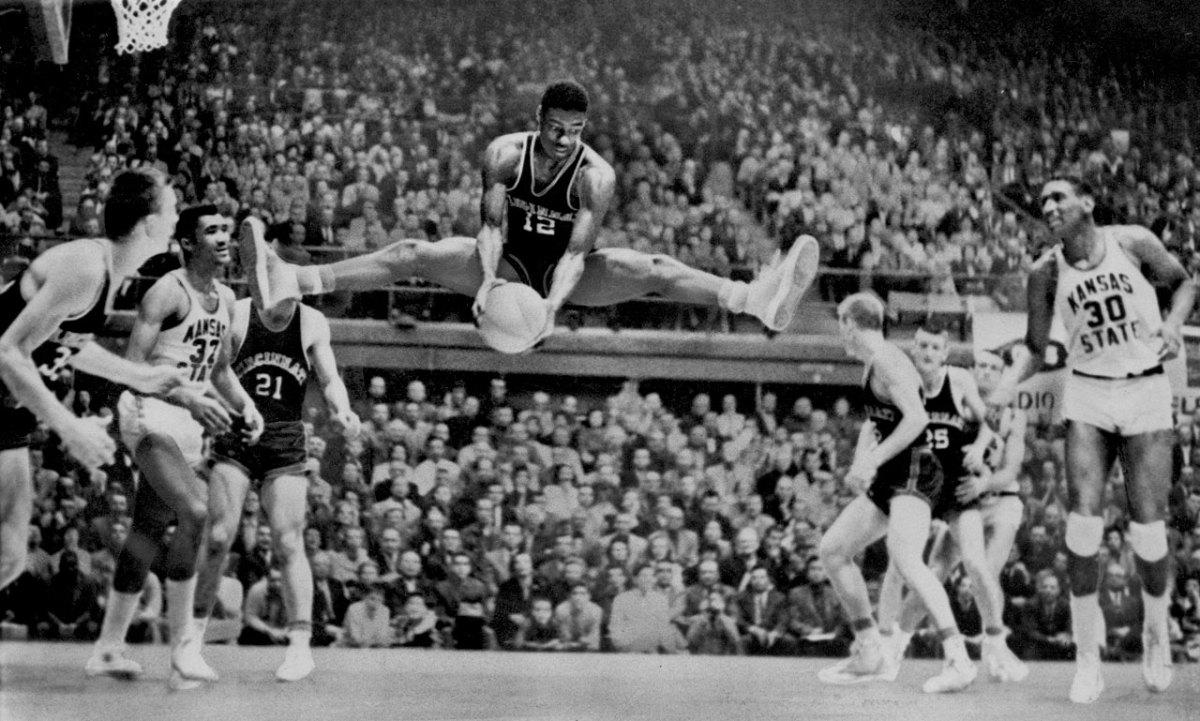
Oscar Robertson first rose to prominence at the University of Cincinnati, where he averaged 34 points per game in his three seasons with the Bearcats.
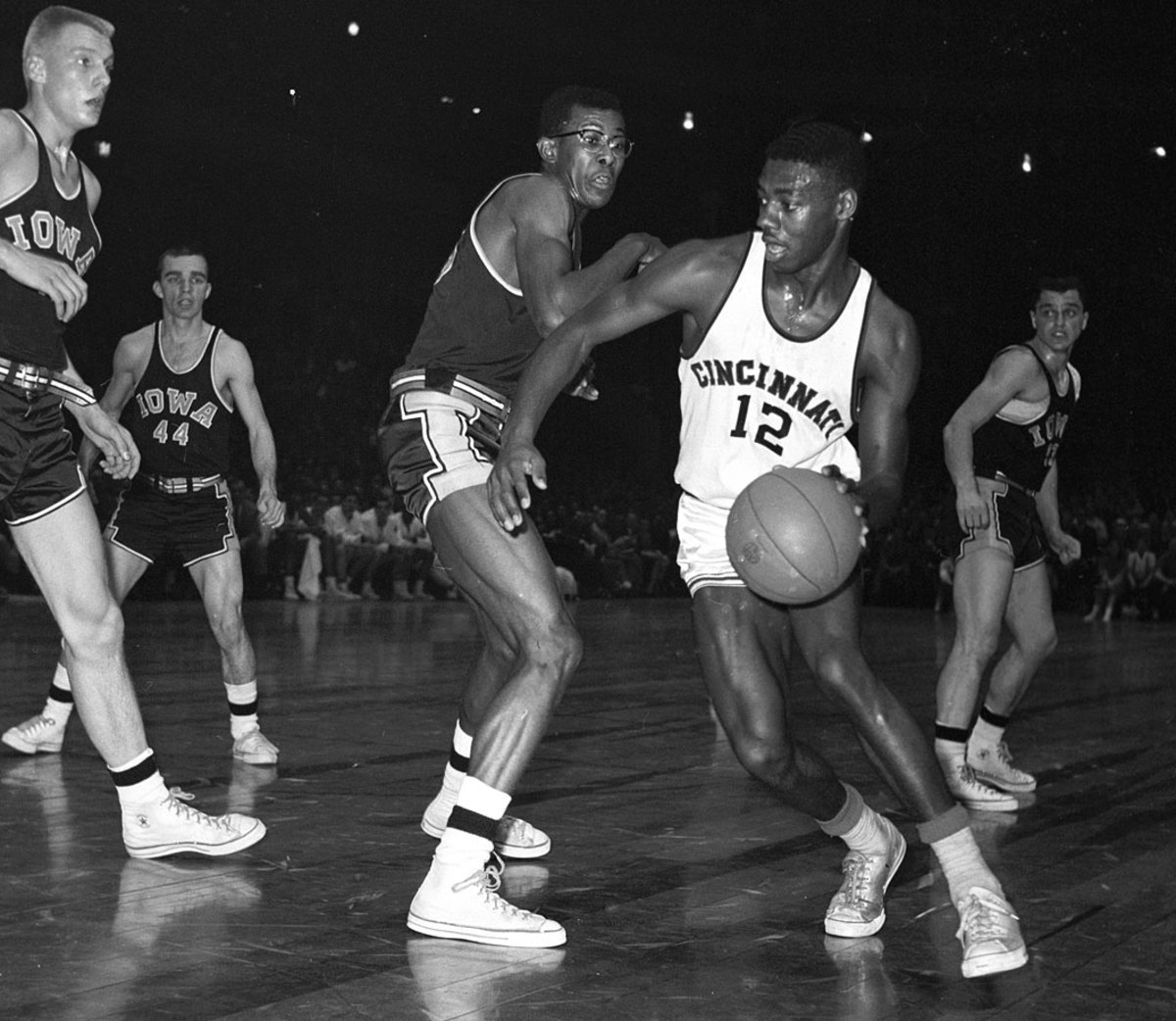
Oscar Robertson set 14 NCAA and 19 school records during his three seasons at Cincinnati, leading the Bearcats to a 79-9 overall record and two Final Four appearances.
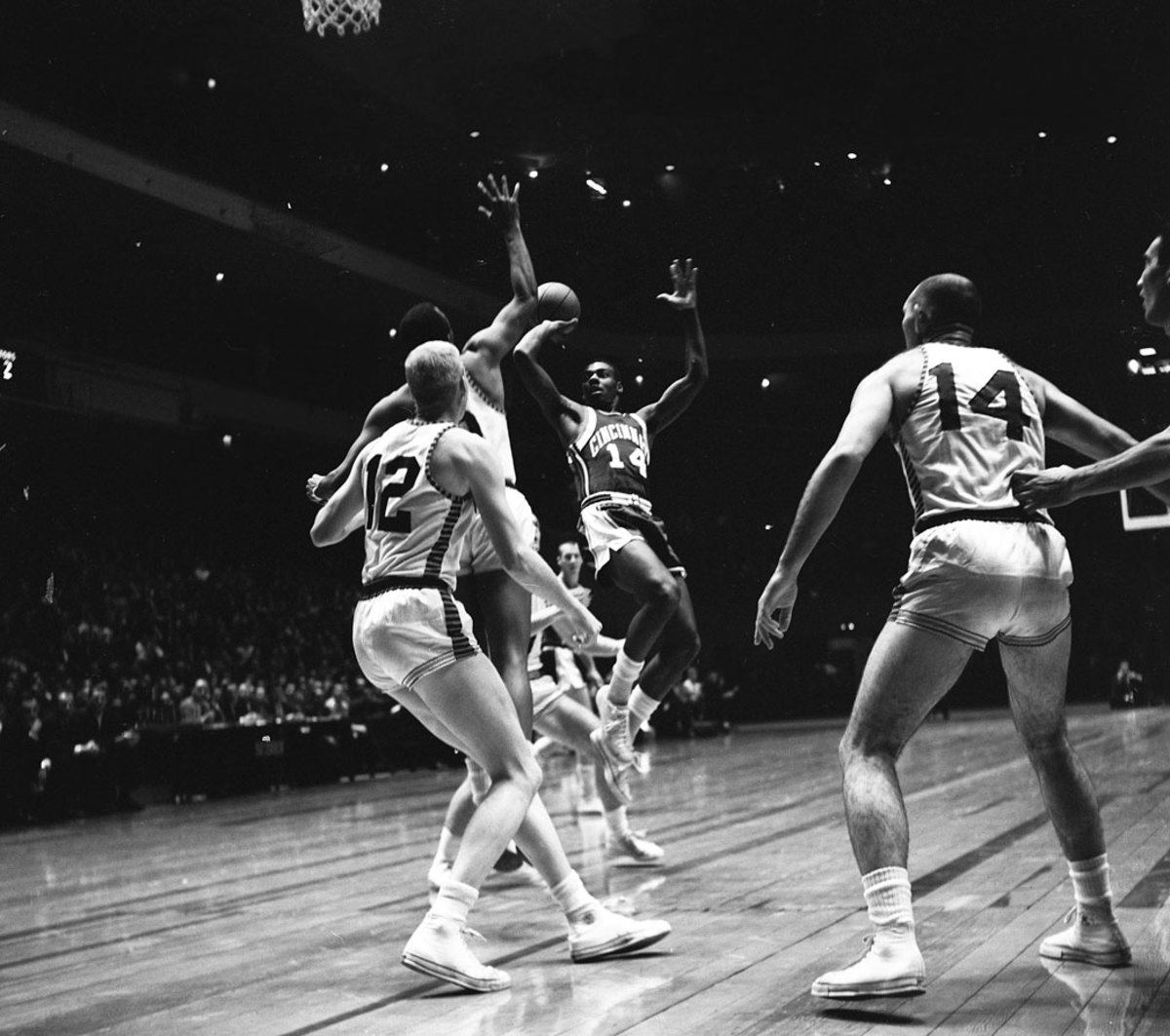
Oscar Robertson spent his first 10 years in the league with the Cincinnati Royals and was named an All-Star every season.
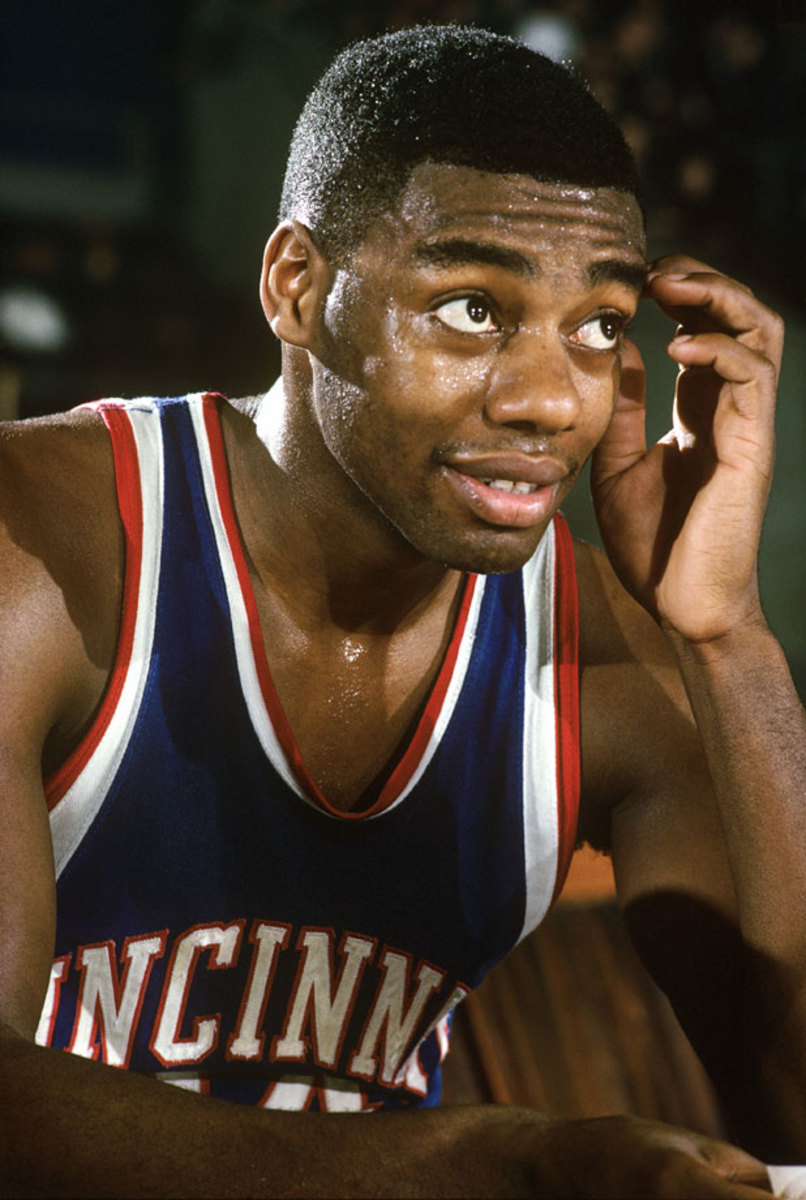
Though Oscar Robertson's tenure was marked with personal achievements -- most noticeably in 1961-62 when he averaged a triple-double -- the Royals never advanced past the Eastern Conference Finals.
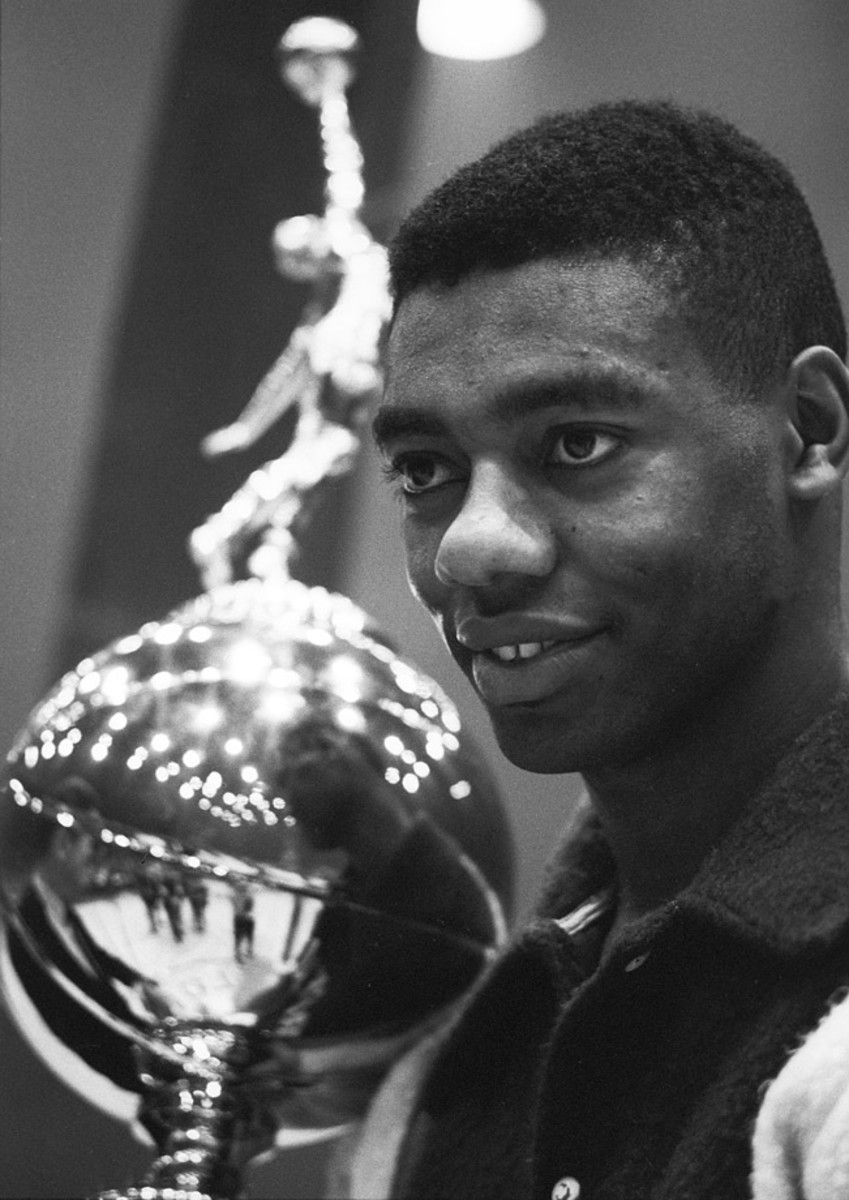
Oscar Robertson won the 1963-64 NBA MVP award and became the only player other than Bill Russell and Wilt Chamberlain to win it from 1960 to 1968.
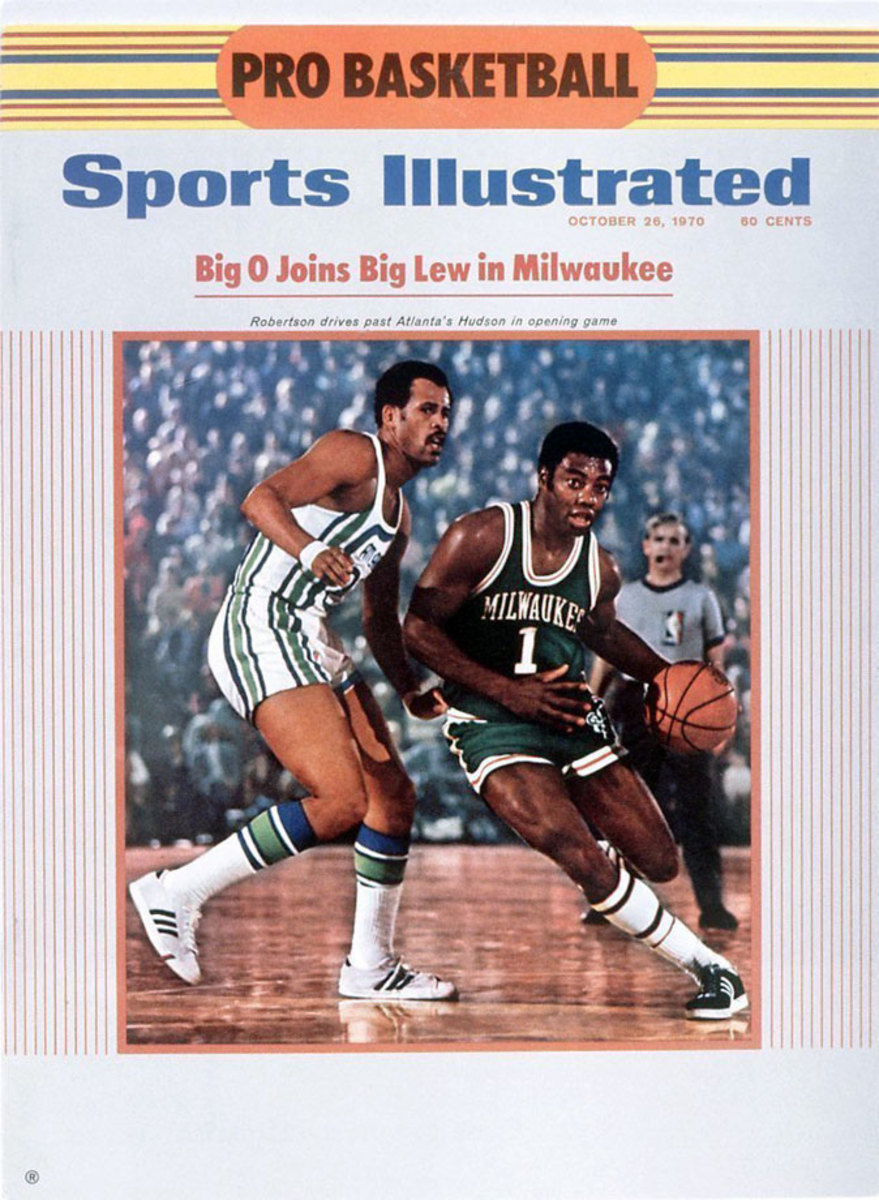
In 1970, the Royals made a surprising move, trading Oscar Robertson to the Milwaukee Bucks for Flynn Robinson and Charlie Paulk. The move teamed The Big O with Lew Alcindor, the game's top young center.
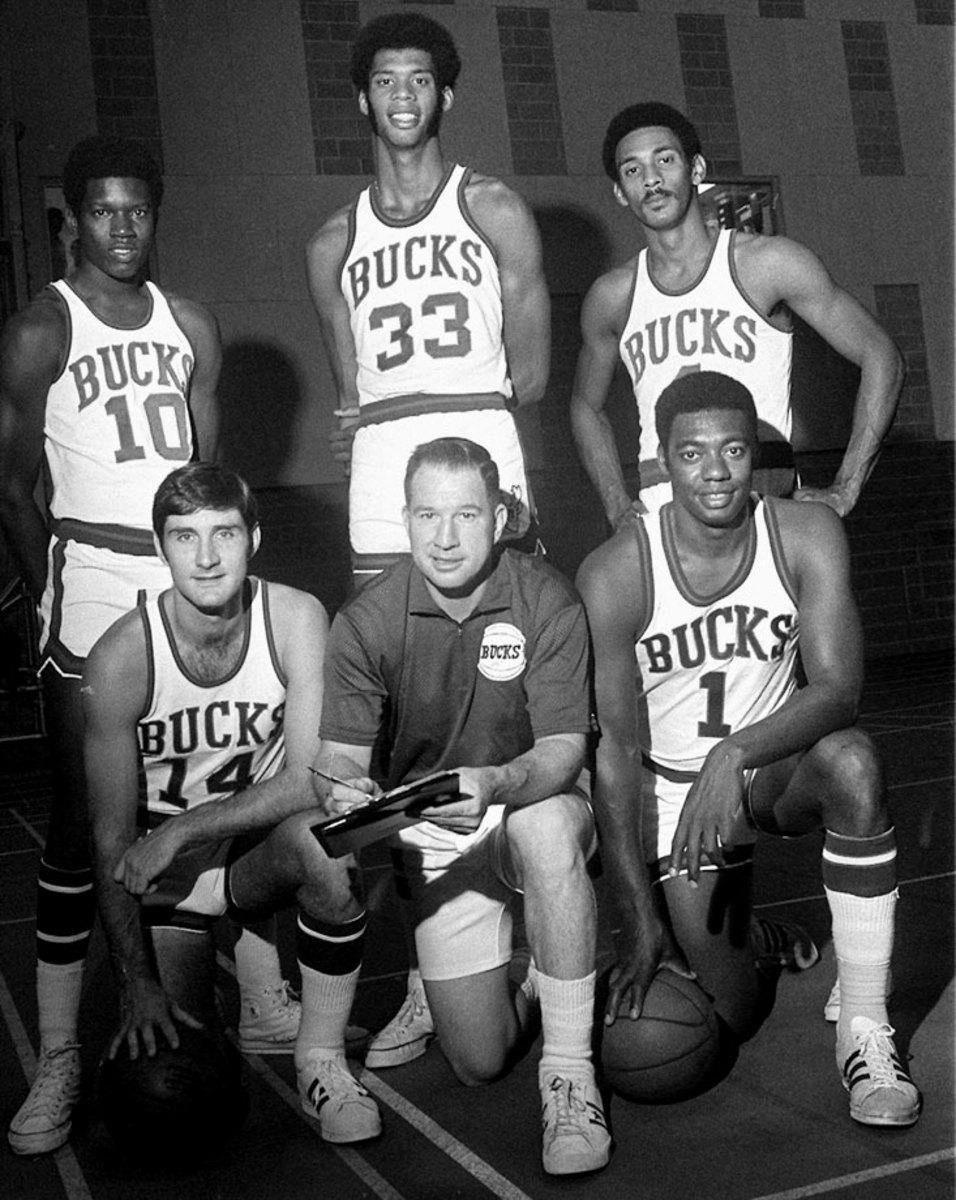
Bob Dandridge (10), Lew Alcindor (33), Greg Smith (top right), Jon McClocklin (14) and Oscar Robertson (1) pose with Milwaukee Bucks coach Larry Costello during the 1970-71 season.
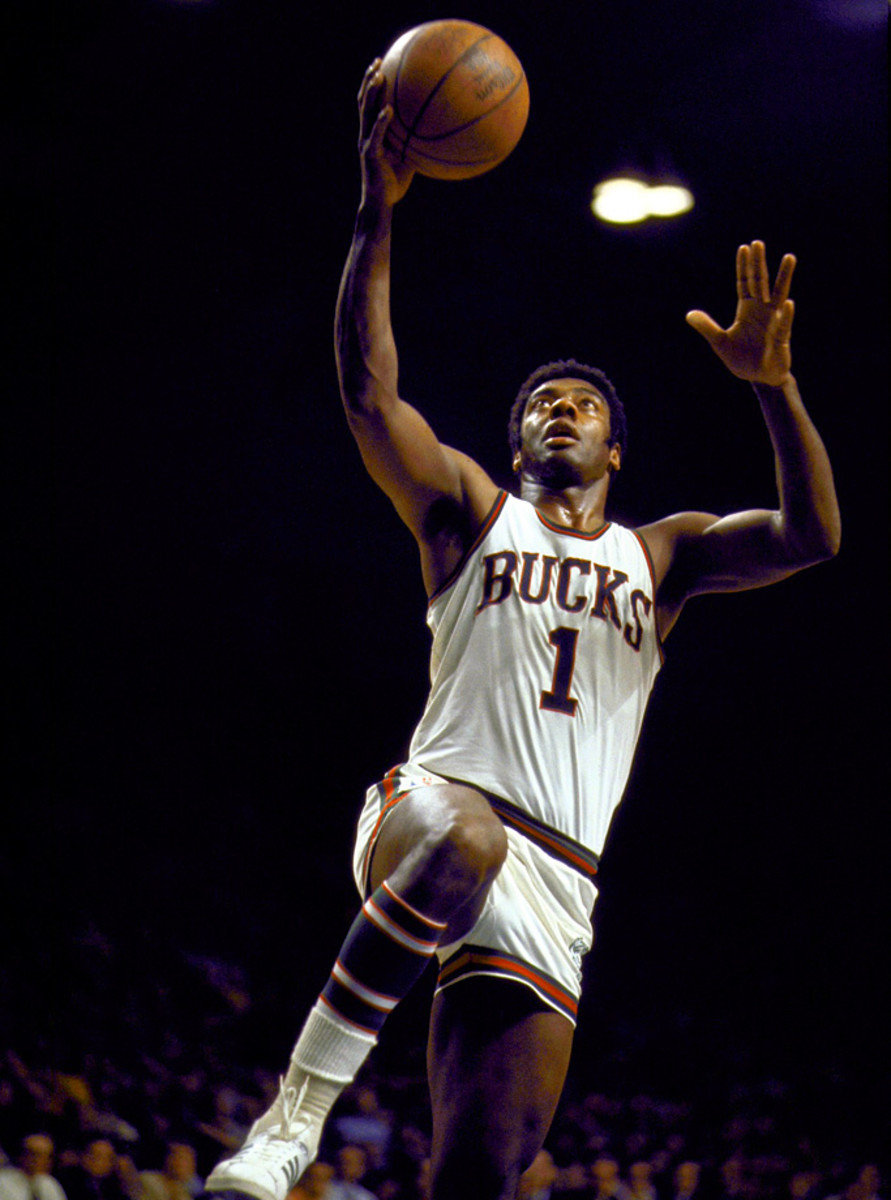
Oscar Robertson made headlines off the court in 1971 with his landmark lawsuit, filed by the Player's Association against the league. The Big O was the Player's Union president at the time and the suit challenged the ABA-NBA merger, the legality of the college draft and the NBA's reserve clause that prohibited free agency. The case, which took six years to settle, led to a merger of the two leagues, the signing of more free agents and eventually higher salaries.
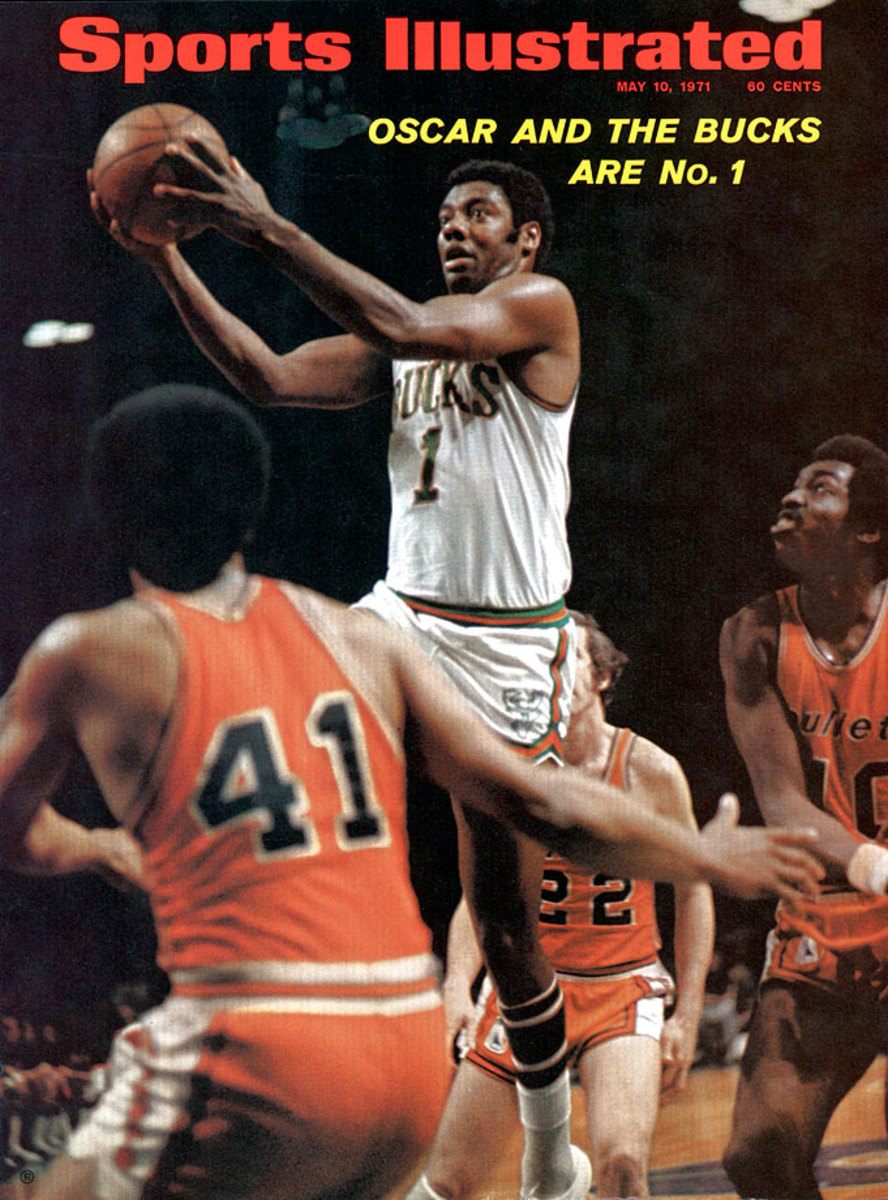
The combination of Robertson and Alcindor was unstoppable as the Bucks went 12-2 in the playoffs and won the NBA title after sweeping the Baltimore Bullets in the 1971 Finals. It was the first championship of Oscar Robertson's career.
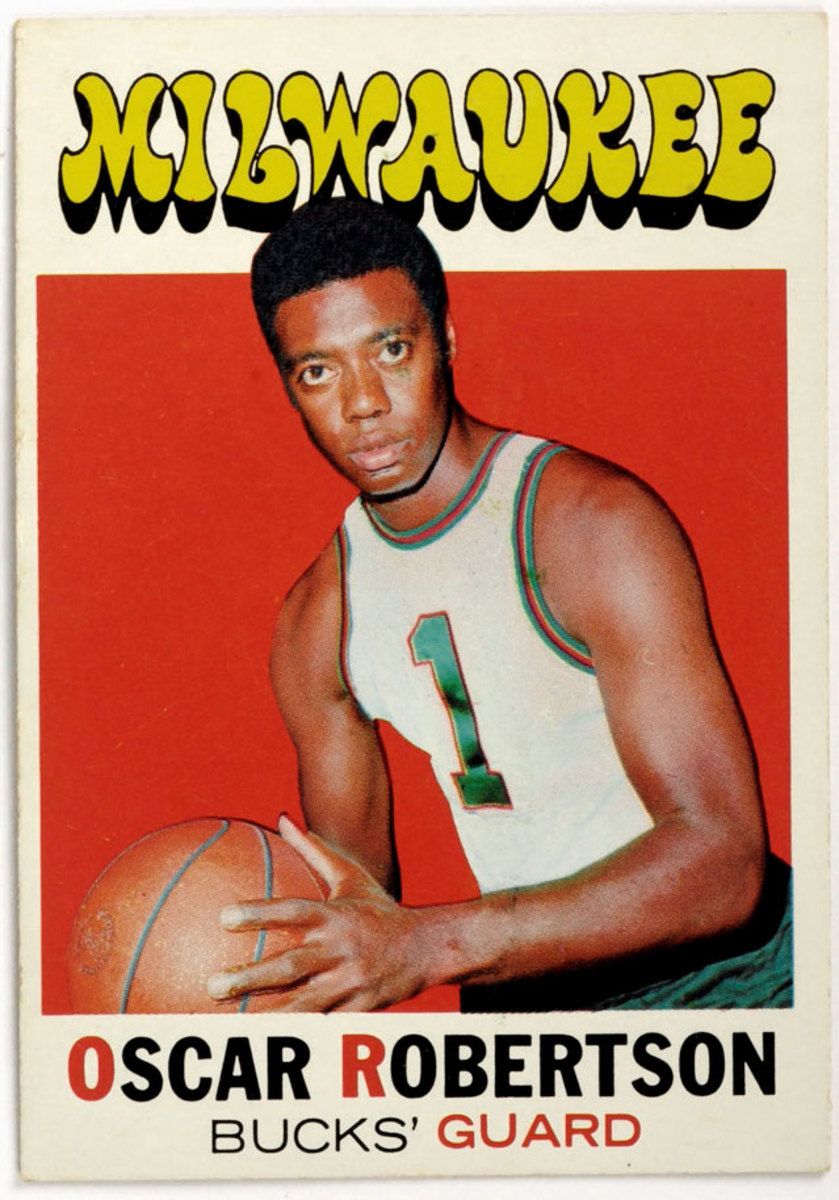
This 1971 Oscar Robertson trading card is on display at the Basketball Hall of Fame in Springfield, Mass.
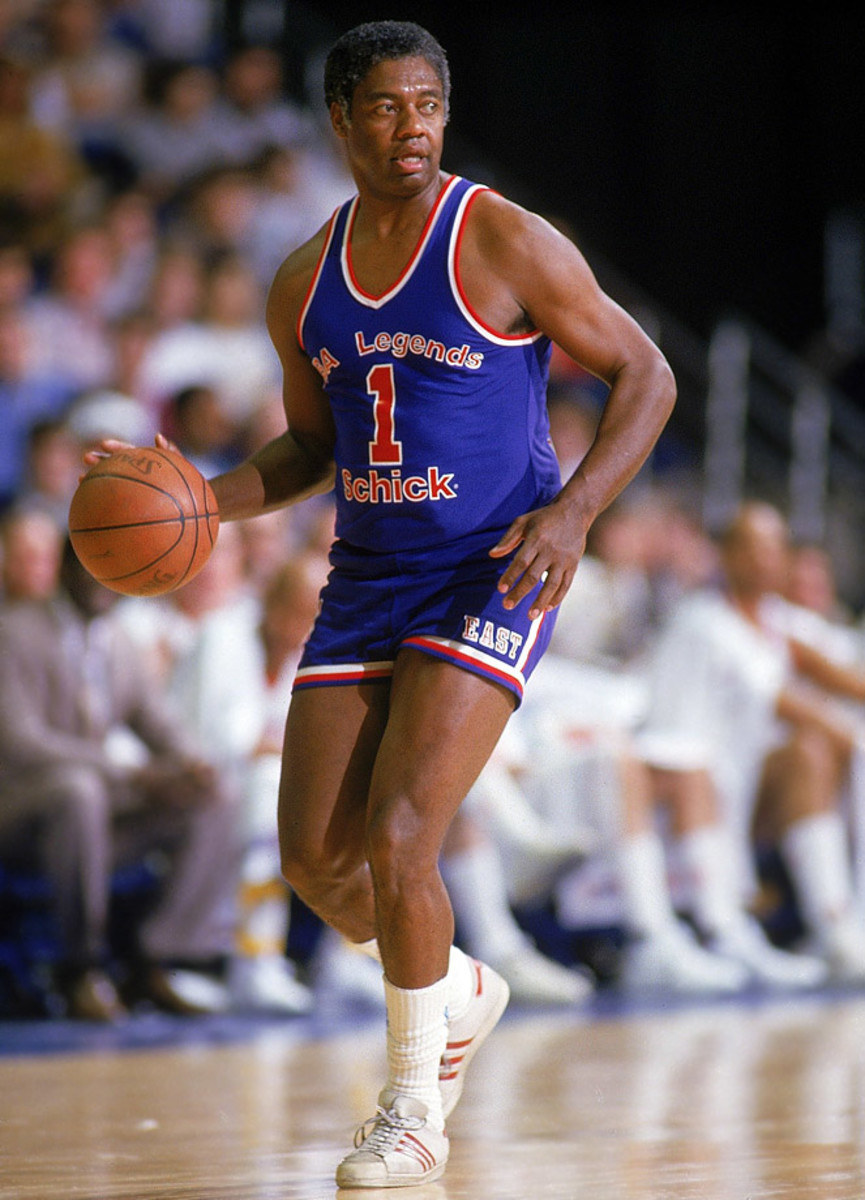
Oscar Robertson retired in 1974 with career marks of 26,710 points, 9,887 assists and 7,804 rebounds collected in 1,040 games. He still showed his touch during the 1987 Legends game in Seattle.
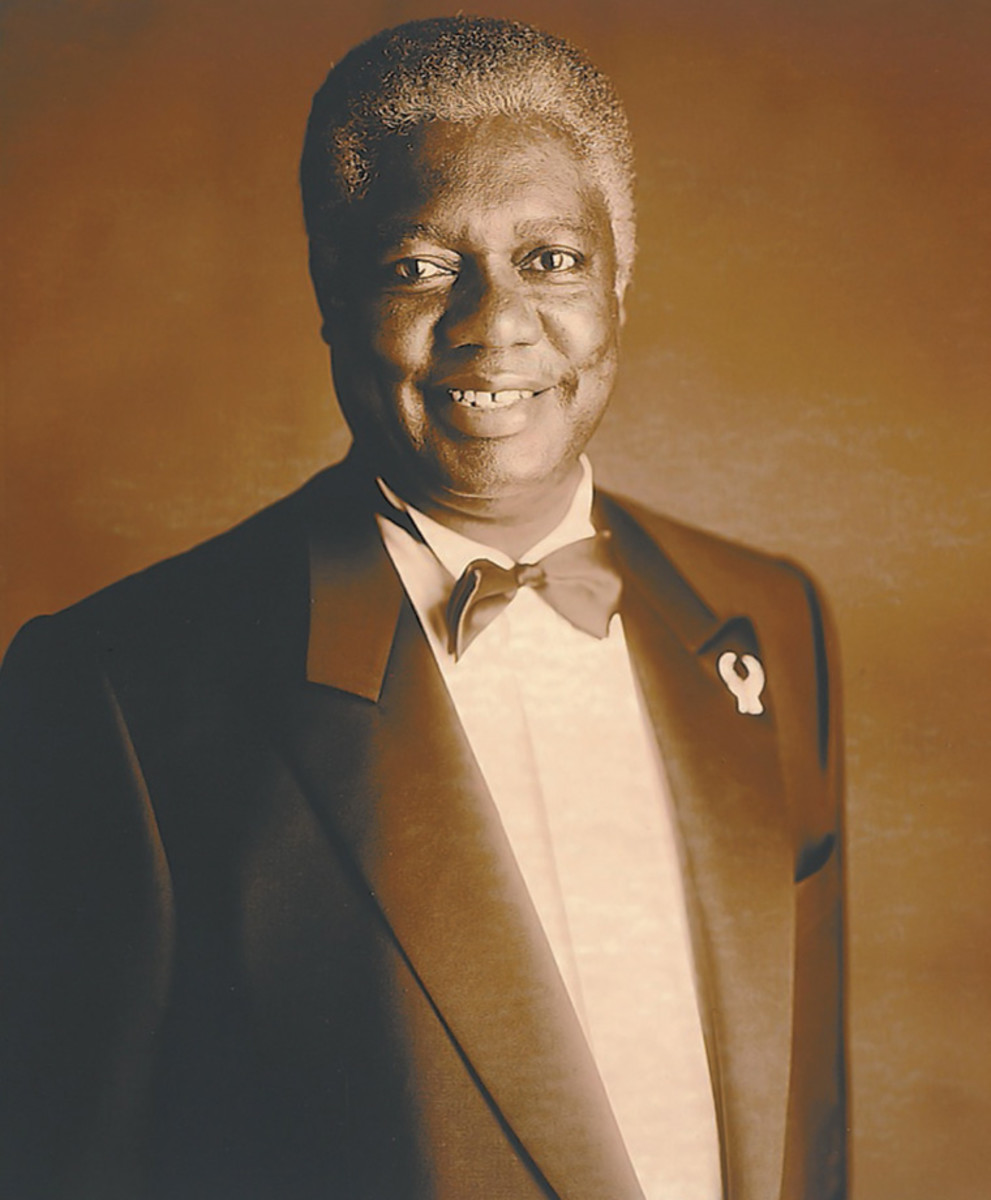
In Dec. 1999, Oscar Robertson was named one of Sports Illustrated's Athletes of the Century.
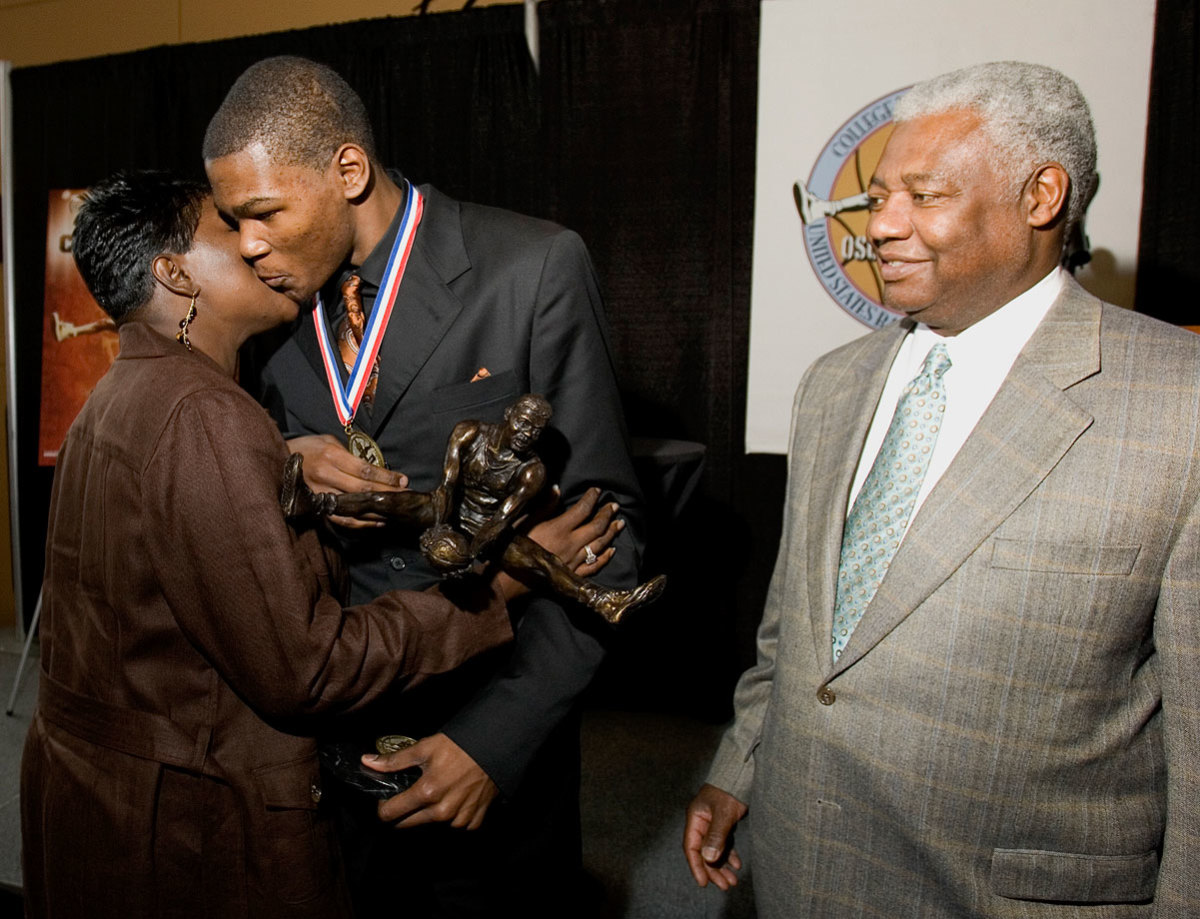
Robertson's legend lives on in many ways, including the Oscar Robertson Trophy, given annually to the outstanding men's college basketball player as chosen by the United States Basketball Writers Association. In this shot, Robertson looks on as Texas freshman Kevin Durant gives his mom a kiss after receiving the award in 2007.
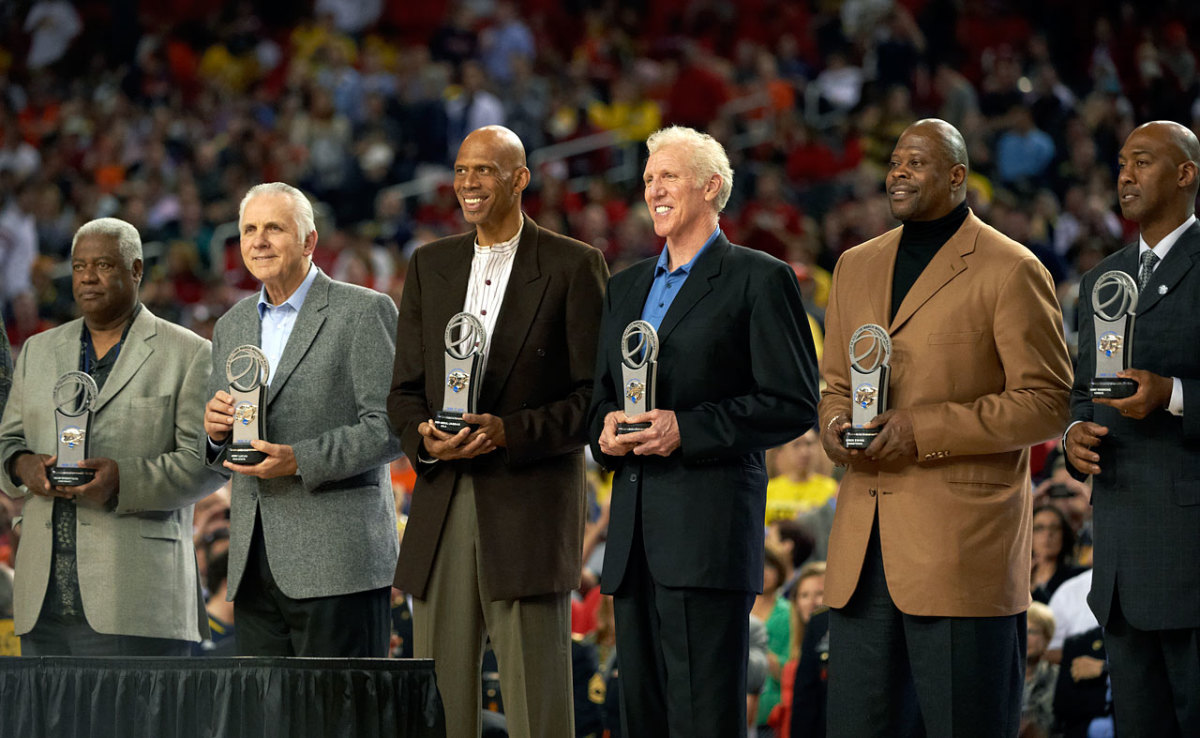
Oscar Robertson, Jerry Lucas, Kareem Abdul-Jabbar, Bill Walton, Patrick Ewing, and Danny Manning all received awards as part of the Top 15 All-Time March Madness Players in April 2013.
Attucks integrated in the late 1960s, became a junior high in 1986, a middle school in 1993 and, most recently, a magnet school for grades 6 to 12.
It’s ironic the Indiana Pacers have worn “Hickory” jerseys this season, honoring a fictitious high school team from a 30-year-old movie when true-life Indiana high school heroes made history practically next door.
Bobby Plump, who became the longtime proprietor of Plump’s Last Shot restaurant in Indianapolis and who jokes that the only true part of Hooisers was the final basket, continues to marvel at Attucks’s seven-year record of 179–20, calling it “mind-boggling.”
Stanford Patton, however, sees room to salute Plump’s success as well as what Attucks achieved.
“Attucks has the same essence of Hoosiers but in a different direction,” he said. “We both had to overcome. I’ll always remember Bobby Plump’s shot … Milan deserved to win. They had a system and they mastered the system. Once they got ahead of you they had you, just like us. They did it with a slowdown. We did it with speed.”
Most of the championship Attucks players, now in their late 70s, are still around, although many no longer live in Indianapolis. Merriweather used his biology background to become a science teacher and made his way through the Detroit school system. He was selected Teacher of the Year and he served as principal at Denby High School. He also helped advise George Gervin during his Hall of Fame career.
Benson continues to run his own business in Denver while Gipson is retired after working 33 years at Chrysler. Hampton worked several jobs, including for the Marion County Sheriff’s Department in Indianapolis. Patton, who starred at Tennessee State and won three NAIA national championships with future NBA standout Dick Barnett, spent time in the Caribbean and Latin America and has worked on what he calls “entrepreneurial pursuits” before settling in Florida.
But the players continue to stay in touch despite the distance and years apart separating them, constantly phoning each other to talk and trade observations.
“Oscar made a statement back then,” Hampton recalled. “If you’ve got family and friends, then you’ve got it all.”
“We had a ball,” Patton said. “We succeeded at a school designed for us to fail.”
